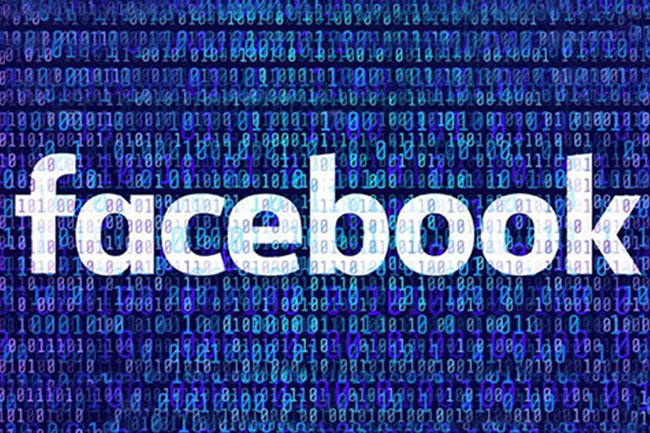Following the statements of its founder Mark Zuckerberg that Facebook is a clean and privacy-focused social network and that there are things they need to fix at this point, Facebook made the biggest interface change in the last 5 years.
Even though Zuckerberg speaks like this, the platform, which is constantly experiencing data leaks, is constantly trying to attract users' attention by adding different features to the platform. Users see posts from Facebook friends they never talk to in their news feed, stalk other users through photos, or are forced to watch clickbait news and viral videos.
Details of the New Facebook Design Here is where Facebook made a big change. Zuckerberg described this change as the biggest change made in the last 5 years. With this design change known as FB5, the blue color that predominantly appears in the Facebook interface was reduced. In this way, the interface gained a simpler appearance despite dozens of features opened with the More button. A new logo was designed to renew the damaged brand image. The logo took on a lighter blue color, and rounded lines were preferred instead of an angular design.
Groups Highlighted With the change, Facebook's Groups have been included as a priority tab on both the app and the site. Suggestions are now in a new tab, and groups are once again highlighted in this suggestions tab.
The Groups feature currently has 1 billion monthly users. With these moves, Facebook aims to double the number of users in Groups. With this change, Facebook aims to not only want the 2.38 billion people in its total user base to use this feature, but also to ensure that these people meet with Groups that appeal to them.
Facebook, which currently states that 400 million users are members of a Group, is also planning to add new features to groups focused on areas of interest such as health or games. Within the scope of these new features, users will be able to view updates from the communities they are members of on a single panel.
Marketplace and e-commerce gain importance In addition to this change, the Groups feature is also surrounded by the Marketplace feature. Marketplace, one of Facebook's most potential features, reached 800 million monthly users approximately 1 and a half years after its launch. Facebook, which copied this feature from Craigslist, allowed it to add a feature that empowers the world's most used application by including real identities in the business.
Marketplace, which stands out with its simple interface, fast and secure sales opportunities, is also preferred by users due to its payment features. Marketplace sellers can receive payments via Venmo or cash through the application, while also allowing buyers to cover shipping costs. Thus, it can be said that Facebook, following Instagram, has also directed its vision towards e-commerce for its main application. In fact, Zuckerberg, who recently spoke, stated that Facebook's future is not in ads but in e-commerce.
While the Groups feature came to the fore with the Facebook Watch Changes, unfortunately the Watch, which was developed with a focus on video content, did not create the expected effect. It can be said that Facebook, which was inspired by YouTube and Netflix when designing the Watch feature, had difficulties in terms of content. The content put out by the company, which does not hesitate to invest in content, is far from being viral like “Stranger Things” or “Game of Thrones”.
Still, reruns of Buffy The Vampire Slayer and a documentary series featuring NBA star Steph Curry have managed to capture the attention of users. Despite all this, Facebook says that 75 million users use Watch for at least 1 minute a day. However, that 60 seconds is not necessarily a consistent occurrence. This suggests that only 4 percent of the user base is interested in Watch. According to a study by Diffusion, 50 percent of US Facebook users are unaware of the Watch feature. This shows that Watch lags far behind other features in terms of brand value.
At the F8 conference where Facebook's new interface was introduced, the company's main source of income, the News Feed, was not mentioned much. Facebook, taking action as young users prefer social networks based on ephemerality like Snapchat, has implemented the Stories feature.
Mark Zuckerberg, who has focused on transience and privacy after Instagram, which has become stronger with stories, and privacy-focused scandals, also touched on this subject at the event. Zuckerberg, who used the phrase “The Future is Privacy”, admitted, “I understand that a lot of people are not sure we are serious about this. I know that we don't exactly have a strong reputation for privacy right now.” Zuckerberg's words, however, revealed that they could not go beyond rhetoric. Facebook has not announced new privacy protections for its developer platform, nor has it yet announced who will fill the vacant Security Manager position for 9 months. Similarly, the Delete History feature announced last year has not been introduced.
It may take a long time for Facebook to change its reputation, which has been associated with data leaks and bugs, as well as its Research app, similar to Onavo, that accessed young people's data without permission.
The company, which recently shared its vision for messaging, wants to combine the end-to-end encryption of Messenger, Instagram Direct and WhatsApp.
On the other hand, in the strategy book that Zuckerberg distributed to his employees as the IPO approached, he included the following statement: “If we don't produce things that kill Facebook, someone else will.”
This awareness from Zuckerberg could change Facebook’s static and constantly copying features from others. If it can truly listen to its user base and produce a safe social network, we can say that Facebook can be more than just acquisitions and copies. Until then, it will continue to be known as a company that relies on other people’s original ideas and purchased applications.

Stage Media
01-01-1970 02:00:00
